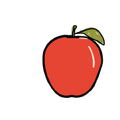

Sure you know the basics, but here are three easy ways to gain an extra edge.
It's important to know the basics of how to taste wine, but that doesn't mean it's never still a daunting task. Let's face it, sometimes our senses feel stumped!
How many times have you heard, read or listened to, the overwhelming aromas of stuff that you literally just can't taste or smell for yourself? Or what about that time you were in the restaurant and had to taste wine for the rest of your table, giving that nod of approval just out of politeness, not judgement… we’ve all been there.
The other side to tasting wine...--red
So what are we really looking for when we taste wine? It’s such a subjective topic, right? We all have slightly different perceptions of flavour and aroma, so if you can smell strawberry and someone else can't, then who are they to tell you otherwise?
So, let’s get to it! You can immediately start becoming a better taster if you focus on the ‘objective’ characters in wine, instead of the ‘subjective’. What do we mean by this? The objective parts of the wine are the facts; the bits that you can't really argue about, the ‘spine’ if you like. And like a spine, these are the elements that hold everything together. If you can get your head around them, then you are 90% of the way there to becoming an awesome wine taster, the rest of it is built on your opinion, which is of course, subjective…
Here are three quick and easy ways to become a better wine taster in less than 10 minutes. The first two are part of the the aforementioned ‘spine’ of a wine and are objective, and the third top-tip takes things back to the subjective, allowing you to put your own spin on things.
Sweetness--strawberry
- Objective-
This is a funny one, and one that a lot of people get wrong. It is worth noting that the sweetness scale runs from ‘dry’ through to ‘off-dry’, ‘medium’, all the way to ‘sweet’.
Now then, sweetness is one of the five core tastes alongside sour, salt, bitter and umami. Sweetness is not a flavour, it can't be smelt, it can only be felt. Flavour and aroma come from our olfactory system, the nose. So with that in mind, how do we judge the sweetness of a wine?

It is true that many wines are perceived as sweet when they aren't; higher levels of alcohol, ripeness of fruit and oak can all contribute to that. But be careful, just because a wine has all of these qualities, it may still be dry. Because sweetness is a physical taste, the best way to know for sure how dry wine is is to simply pinch your nose when you taste. Eliminate flavour so that you are left only with taste. If there is sugar in the wine, we promise, you’ll be able to feel it and taste it.
Finish--cork
- Objective-
OK, so this is probably the easiest clue as to the quality of a wine. It’s simple, the better the wine, the longer all of those flavours, aromas and textures are going to hang around on your palate. You can't make good wine with bad fruit, period. The main factors that contribute to the finish are the quality of grapes and the care and attention to detail in the winery. So, the next time you taste a wine, think about how long the finish is. How long can you taste the wine after you've sipped it? Tip: anything over 20 seconds and you are probably tasting a pretty good wine 😉.
Use Colour Categories--plum
- Subjective-
This technique has really helped so many people over the years. Starting out as a wine taster, this is often the part people struggle with to most… “what does this wine actually smell like?”.
So, we recommend using a traffic light system of colour to aid you. The next time you put your nose into a glass, don't try to get too hung up on specific aromas. Instead, close your eyes, and see if you can match up what you are smelling to a colour.

Here are some common descriptors with their colour association:
🟡 Yellow - tropical fruit, butter, stone fruit, patisserie
*typically only found in white or skin contact wines
🟠 Orange - butterscotch, toffee, nuts, honey, toast, vanilla, baking spices
*most common in white wines with age or suggests some oak influence
🦩Pink - watermelon, fairyfloss, bubblegum, banana, blossom
*most common in wines that use winemaking techniques like carbonic maceration like Gamay
🔴 Red - red berries (strawberry, raspberry, cranberry, red cherry), red apple etc
🟣 Purple - darker fruit, cassis, dark plum, blackberry, blackcurrant, ink, violet, lavender etc
🟢 Green - grassy notes, herbs, jalapeno, vegetal (like asparagus, green peppers or capsicum), mint, eucalyptus, or leafy notes.
🟤 Brown - Raisin, coffee, mocha, chocolate, tobacco, cola bottle, cedar/wood, spice, leather, toasted coconut et.
*most common in red wines with age or that have some oak influence
The most important thing here is to not stress yourself out trying to identify specific flavours and aromas in your wine. Work with colour, it is your friend. Also, it is totally fine to describe a wine as having lots of ‘green’ notes, and by describing it so, you are covering off a whole host of descriptors. Finally, wine doesn't just fit into one of these colour wheels. For example, a glass of red wine may display red, purple and brown characteristics, so try to keep an open, colourful mind the next time you are tasting!
About the Author
Harry started his adventures in New Zealand learning how to make wine before squishing grapes with his feet (literally) in Portugal. He is a contributing wine writer for a number of UK magazines as well and a former wine director and consultant specialising in wine list development. When he isn’t drinking wine, he loves a beer and collecting records before spinning a few tunes.
Do you know your wine personality? If your answer is no, take our quiz to find out which wines to pick up next and build your box!
Build my box





